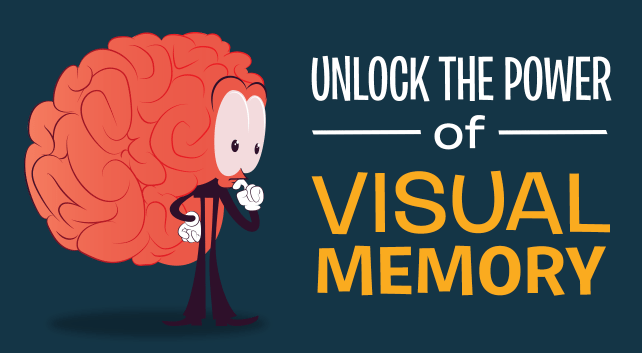- rli
- Blog post
How to unlock the power of visual memory
Seeing sticks. Countless studies have demonstrated that visual memories – what we see and what we do – are more easily recalled and retained than information we only hear.
With some learning material, it’s obvious how to utilize visuals to help the information stick. But what about information that doesn’t easily lend itself to visual representation? For example, suppose your sales department is teaching its salespeople a new relationship-building technique. How can you leverage visual memory for that?
Recent studies have shown a proven way to integrate visual memory into the learning process – regardless of subject matter. By integrating this technique into the learning culture, you could increase your learners’ ability to recall valuable information when they need it most.
The research
A group of neuroscientists in the Netherlands conducted a study on memory by first examining a unique group of subjects – memory athletes. These individuals are able to perform incredible feats of memory, such as memorizing the order of a deck of cards in under a minute.
The researchers conducted fMRI scans of the athletes’ brains and compared them with scans from people who were of similar age, health and intelligence.
The researchers didn’t expect to find any notable differences. But they noticed something striking about the memory athletes’ brains: There were significantly more connections between different areas of the brain, particularly between the visual network and the area responsible for long-term memory. The researchers attributed these differences to the memory training the athletes practiced.
To explore the effects of memory training, the research team conducted a second study with subjects who had normal memory skills and no previous memory training. Subjects were given a long list of words to memorize and were tested on their recall, with the average being 26 words.
They then divided the subjects into two groups – the training group and the non-training group. The non-training group was asked to continue studying the list of words for 30 minutes each day for 40 days, with no additional instruction. The training group, however, was taught a system to use during those 30 minutes of study. Used by memory athletes, it’s called “loci training,” or the “memory palace” technique. This technique teaches learners how to harness the power of their visual memory to help information stick.
For example, learners envision themselves walking down a familiar street or through a familiar house (hence “memory palace”). As they imagine moving through the space, they associate a piece of information they need to remember – in this case a word – with a notable landmark or piece of furniture. By introducing this visual element into the learning process, recall of new information can be vastly improved.
The results
After the study period, both groups were again tested on recall. While the no-training group remembered only seven more words than they did on the first day, the training group remembered 35 more – more than doubling their original performance and outperforming the no-training group by 184%.
But that’s not all. When the researchers tested them again four months later, after they stopped studying, the training group still remembered an average of 48 words – 22 more than they did after the first day of study.
Implications
Adding a visual component to important information can greatly increase memory – and it sticks long-term. So let’s go back to our original example – salespeople learning a new relationship-building strategy. How can you create a visual component for information like this?
Here are some suggestions based on the research:
- Break the new information down into steps. Whether it’s a relationship-building strategy or a new manufacturing process, the approach is the same – break the information down into a step–by–step procedure to follow. This won’t lend itself to every topic, but most new information becomes more memorable when it’s broken down into smaller pieces.
- Teach the system. Make learners aware of the power of this memory technique and how they can use it to increase their recall of important information. Ask learners to choose a familiar location and visualize moving through it, mentally associating each notable feature they “see” with a step of the new relationship-building strategy they learned.
- Practice. Learners won’t need to practice 30 minutes each day like in the study – they aren’t training to be memory athletes. But by practicing their visualization every so often, they’ll be able to lock in the new information. And they can continue to use the “memory palace” technique on future topics.
“Once you are familiar with these strategies and know how to apply them, you can keep your performance high without much further training,” said the study’s the head researcher.
Source
Dresler, et al. (2017). Mnemonic training reshapes brain networks to support superior memory. Neuron. doi: 10.1016/j.neuron.2017.02.003

Get a demo of all our training features
Connect with an expert for a one-on-one demonstration of how BTS Total Access can help develop your team.





1 Comment